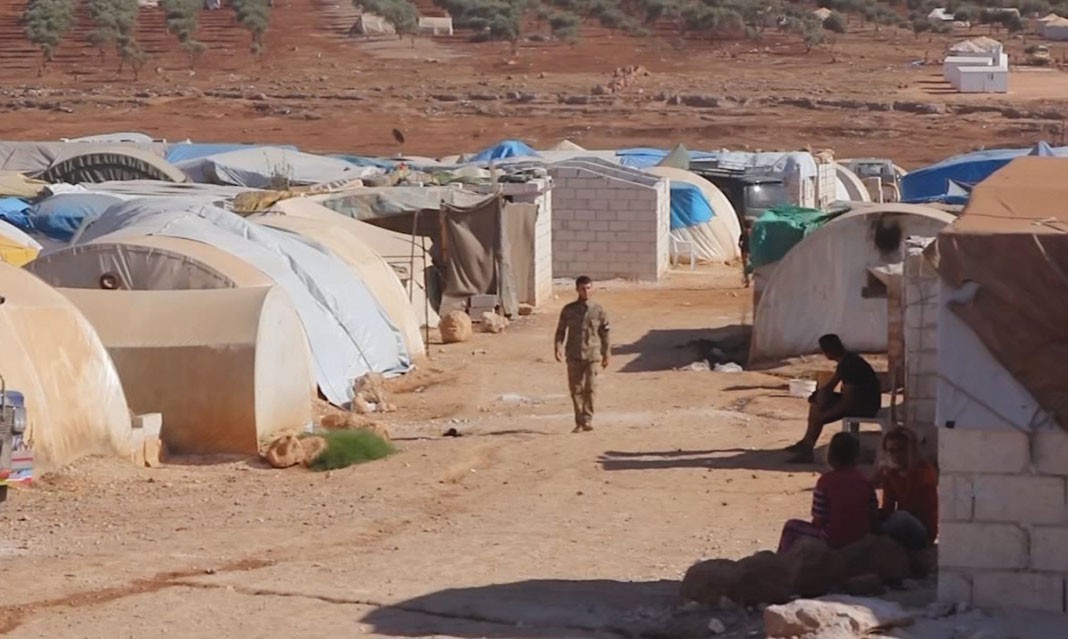Syria. You have most likely heard the name in the media over the last few years. For many people, it might be a tragic tale happening somewhere far overseas. But for me, it is a totally different story. It is my homeland, my beautiful childhood, my cherished memories, my grandparents, my uncles and aunts, and a part of me that will never fade away.
Earlier in November, I had the honour of watching 50 Feet from Syria at the first annual Syrian Film Festival. SYFF, a non-profit organization, held the event in Toronto on November 13 to 15 and screened a variety of short films and documentaries to show the struggle of Syrians.
I felt like it was my duty to enrich my knowledge about a country so rich in history and culture and expand my perspective on the matter. And so did hundreds of others who attended the film festival, with the event being sold out the day before it opened.
Directed by Skye Fitzgerald, the Oscar-shortlisted 50 Feet from Syria follows the journey of Dr. Hisham Bismar, a Syrian-American hand surgeon who left his comfortable lifestyle behind and flew to Turkey to provide medical help for victims of the Syrian civil war.
The film takes us through Bismar’s experiences in Amal Hospital located on the Turkish border, as he takes in one wounded child after the other. And to say that the children are simply “wounded” is an understatement. Some of the children, as young as age six, are shown gasping for air and fighting for their lives, suffering from severe burns and other ailments.
The Medium spoke to Bismar in a phone interview.
Asked why he embarked on the journey, Bismar said that he was frustrated by lack of the attention given towards Syria in mainstream media. Bismar wrote to President Barack Obama and other politicians, as well as to newspapers and editors, urging them to pay attention to the conflict—but he never heard back.
“One big thing for me is that I thought that if I stayed in Syria, I could’ve been in the same situation. I could’ve been one of the people who got arrested. I would’ve liked somebody to provide some help,” Bismar says.
The large number of wounded children and the severity of their injuries took Bismar by surprise.
“Nobody really came in with a simple wrist fracture. Everybody had complex injuries involving multiple medical systems,” he said. “It mainly involved injuries related to the joint where the joint is completely destroyed and in young patients, you really cannot offer them a joint replacement.”
In many instances, Bismar was forced to combine two joints into one when an elbow joint was completely destroyed. The result is that the patient will never be able to move their elbows again. In these instances, patients are caught in a difficult situation: to maintain the use of their arm but live through severe pain, or to fuse it and never be able to move it again.
Once, when Bismar offered to fuse a young man’s elbow, the man refused because as a laborer, he wouldn’t be able to function without his arm.
Bismar also shared the story of a 10-year-old girl who was not able to get a diagnosis of the tumour growing in her finger due to the limited facilities available.
“I told her dad that I can remove the tumour but I don’t know what it is, because based on what the tumour is, she might need to have another surgery, maybe even a bigger surgery if the tumour is aggressive,” he said.
After a 40-minute drive to Antalya, one of the largest cities in Turkey, the parents still had no luck. They were not able to find anyone to actually analyze the tumour.
“I wanted people to know what’s happening over there because I was alarmed with the level of violence and how the situation has deteriorated in Syria,” Bismar said about his hopes for the film.
“I wanted people to understand that this is a big problem. If you do not handle it, it’ll start affecting us, even here in the western countries, and basically, that’s what’s happened.”
He adds, “The other more specific reason is that I really thought that we should have done something in terms of preventing the use of parallel bombs. Those caused the highest amount of casualt[ies] during the conflict and there’s no reason why we couldn’t have done something, such as a no-fly zone, to try to reduce civilian casualty.”
Bismar plans to go back to Turkey or even Jordan in the late spring or summer, seeing that the situation has deteriorated since he left.
“Well, how can we help?” I ask.
Bismar believes that one of the biggest ways to help is to talk to people. “Try to write [to] politicians. Educate the people around you. Canada allows private sponsorships, which is a really big avenue for Canadians to do helpful work,” he said.
“When you have a private sponsorship for the refugees, it’s different from having governmental sponsorships,” Bismar said. “They can get integrated faster into the society through the relationships that they build.”
He added that private sponsorships are “a great avenue for people to come together and work together to educate other people about the problem”.
“Unless we solve the problem in Syria, we’re going to continue having an influx of refugees and the situation will continue to deteriorate,” he said.
50 Feet from Syria will inspire you to make a change. Whether you plan to educate the people around you, write to newspapers, or volunteer locally, do something, because this conflict is not only a Syrian problem or an Arab problem, but definitely a human one.



